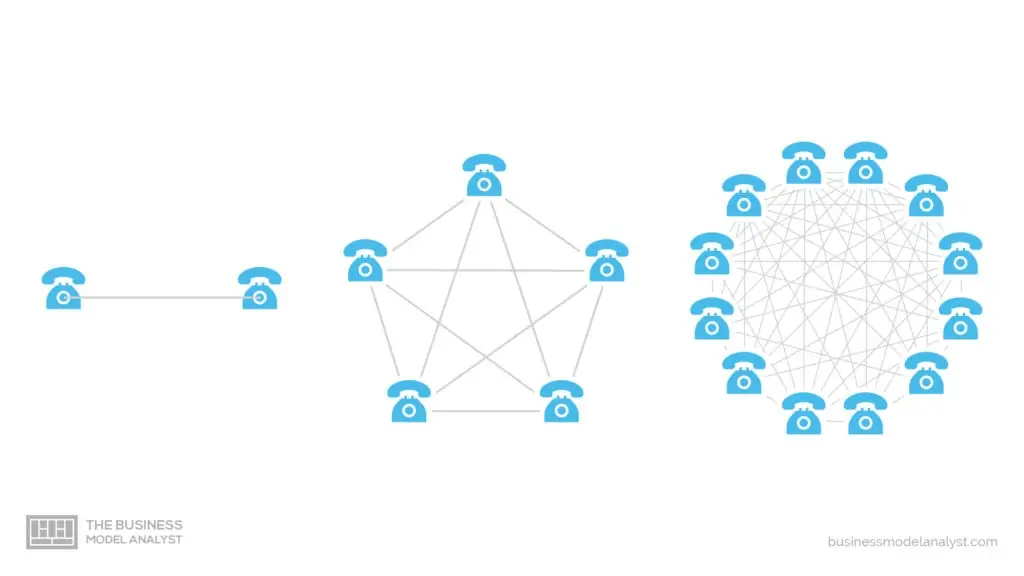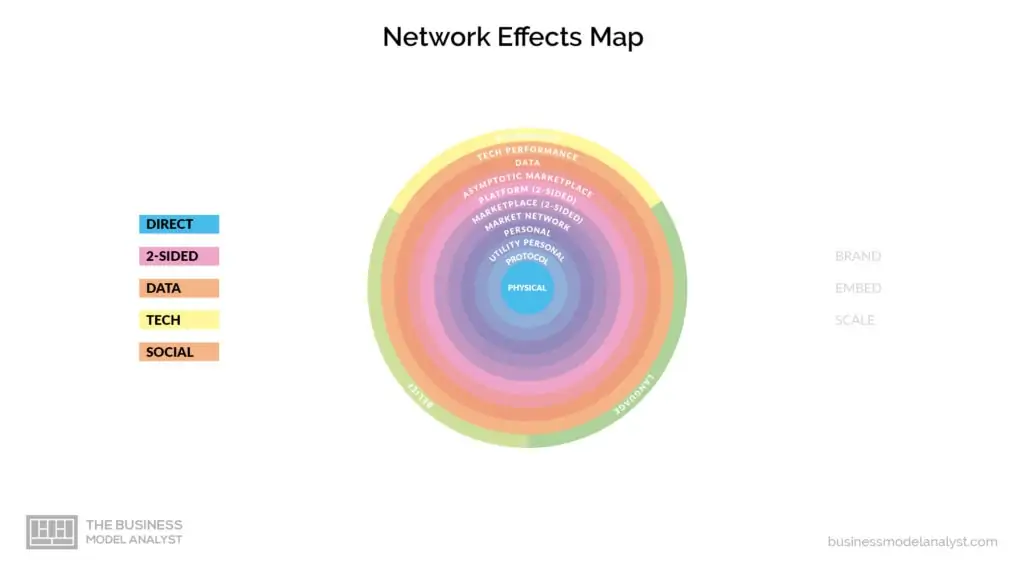Some of the greatest current brands, such as Facebook and Amazon have their businesses built upon network effects: the value of their products increases as the importance of the network does. However, not all businesses are able to develop network effects – and not all of them should, anyway. There are many different approaches and strategies, and they are directly dependent on the type of product, service, market, and industry.
Contents
What are Network Effects
Network effects take place when the more people use the product or service, the more valuable it gets to everybody. As more users participate, they get an improved experience, and that encourages new participants to take part since they see benefits in the network.

It is fair to say that the phenomenon of the network effect began in the early 1900s, with the invention of the telephone, which became the strong means of communication we have watched due to the increasing number of users. Nowadays, the network effects can be strongly felt in social media. The more people create accounts on those sites, the more valuable they get, not only for users but for shareholders. Because as more users join, more businesses get interested in advertising. And the cycle keeps going: more advertisers lead to more revenue for the website. More revenue means greater investment in the service to the consumer, enhancing its experience. Among the benefits of network effects, are:
- Creating barriers for users to exit and for new entrants to entry;
- Helping develop winner-take-all markets;
- Protecting software companies from the competition;
- Helping scale business;
- Increasing customer base, market share, and value proposition;
- Fueling profit.
Types of Network Effects

There are 13 types of network effects, which will get into five broader categories:
Direct Network Effects
The strongest but simplest network effects are direct: the more users, the bigger the value. Let’s take a look:
Physical (Direct)
These network effects are tied to physical nodes and links. Each node is connected to every other node. Since the value of the network is proportional to the density, each new node adds value to it. Physical networks are usually utilities, such as telecommunications and infrastructure.
Protocol (Direct)
A protocol network effect comes up when some standard is declared, and all nodes (and their creators) can plug into it by using that protocol. Great examples are Bitcoin and Ethereum. Whenever a protocol is adopted, it is extremely difficult to get replaced.
Personal Utility (Direct)
These network effects are based on two qualities: it is indispensable for users’ lives and their personal identities are tied to the network. They are typically used for people to interact with their personal networks, so it is important for them to be part of it. Some examples include WhatsApp, Slack, and Skype.
Personal (Direct)
Personal network effects occur when a good part of people know they are using the same product, so they feel like their personal identity and reputation are related to it, getting influenced to join the network. This one does not involve an actual practical utility as the one before and is less vital. Some examples are Facebook and Twitter.
Market Networks (Direct)
They are a combination of transactions from a marketplace and communication from a personal network. Usually, they are the result of a previous offline network, so the relationship among the nodes is direct. Some examples are HoneyBook and Houzz.
2-Sided Network Effects
Also called indirect network effects, the 2-sided network is composed of supply-side and demand-side users, who come to the network for different reasons, building value for the other side. Let’s go deeper:
Marketplace (2-Sided)
A marketplace depends on buyers and sellers. The network is the greatest value, by connecting the two. It requires some “lock-in”, to avoid multi-tenanting (when buyers and sellers use more than one marketplace at the same time). Some famous examples are eBay, Google, and Tinder.
Platform (2-Sided)
The platform has a supply-side and a demand-side that create value to each other but only through an intermediary platform, which will, therefore, provide value for them both. Microsoft OS, Android, and PlayStation are great examples.
Asymptotic Marketplace (2-Sided)
No two 2-sided marketplaces are the same. Sometimes, both the demand and supply sides grow together, sometimes (like the OpenTable case) the supply side has to get strong in order to attract the demand side, and there are other times when the supply side adds value quickly, but soon starts losing it. They are more vulnerable to competition and can also be susceptible to multi-tenanting. Many people use both Lyft and Uber, for example.
Data Network Effects
Data networks effects arise when the value increases with more data added. Each user feeds useful data to the central database. If this data is really beneficial to the users, the product becomes powerful. Waze is a great example of the data network effect.
Tech Performance Network Effects
For these network effects, the more users or devices connected to the network, the better the technology becomes, making the product faster, cheaper, or easier to use. It is the case of BitTorrent, for instance.
“Social” Network Effects
There are three main types of social network effects: language, belief, and bandwagon effects. But that number could easily expand. Let’s understand each one:
Language
Language has always been the main intermediary between the nodes in the social network. Startups may benefit from these network effects by creating business category language or by naming a product or brand. It is the case of terms like “portal” for Yahoo!, cryptocurrency for Bitcoin, or for the actions of Googling or Xeroxing.
Belief
Sharing common beliefs is essential to be part of a group and to be accepted by the other members. That’s why beliefs become more valuable as more people believe them. That occurs both for products like Bitcoins and for religions.
Bandwagon
Bandwagoning is about the social pressure to join a network to avoid being left out. It is the case of strong brands, as Apple, which triggers the psychological need to be part of the cool kids.
Conclusion
It is fair to affirm that online marketplaces are changing the nature of commercial transactions, working relationships, communication, and more. Over the last years, countless platforms have shown a huge variety of products and services, probably never seen before. The growing amount of online marketplaces may probably cause traditional transactional structures to gradually transform (or shrink), and we may have a much more flexible marketing environment, also more able to quickly understand the needs of customers. If you enjoyed this blog post and want learn more about the topic, go ahead and check our Network Effects Super Guide:


